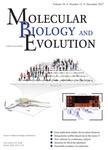版权所有:内蒙古大学图书馆 技术提供:维普资讯• 智图
内蒙古自治区呼和浩特市赛罕区大学西街235号 邮编: 010021

作者机构:Chinese Acad Sci Inst Zool CAS Key Lab Anim Ecol & Conservat Biol Beijing Peoples R China Univ Chinese Acad Sci Beijing Peoples R China Chinese Acad Sci Ctr Excellence Anim Evolut & Genet Kunming Yunnan Peoples R China
出 版 物:《MOLECULAR BIOLOGY AND EVOLUTION》 (分子生物学与进化)
年 卷 期:2021年第38卷第2期
页 面:531-544页
核心收录:
学科分类:0710[理学-生物学] 071010[理学-生物化学与分子生物学] 07[理学]
基 金:Strategic Priority Research Program of Chinese Academy of Sciences [XDB31000000] National Natural Science Foundation of China [31822050, 31821001] Frontier Key Project of Chinese Academy of Sciences [QYZDY-SSW-SMC019] Youth Innovation Promotion Association, CAS
主 题:coevolution comparative genomics parasitism pandas
摘 要:Antagonistic coevolution between host and parasite drives species evolution. However, most of the studies only focus on parasitism adaptation and do not explore the coevolution mechanisms from the perspective of both host and parasite. Here, through the de novo sequencing and assembly of the genomes of giant panda roundworm, red panda roundworm, and lion roundworm parasitic on tiger, we investigated the genomic mechanisms of coevolution between nonmodel mammals and their parasitic roundworms and those of roundworm parasitism in general. The genome-wide phylogeny revealed that these parasitic roundworms have not phylogenetically coevolved with their hosts. The CTSZ and prolyl 4-hydroxylase subunit beta (P4HB) immunoregulatory proteins played a central role in protein interaction between mammals and parasitic roundworms. The gene tree comparison identified that seven pairs of interactive proteins had consistent phylogenetic topology, suggesting their coevolution during host-parasite interaction. These coevolutionary proteins were particularly relevant to immune response. In addition, we found that the roundworms of both pandas exhibited higher proportions of metallopeptidase genes, and some positively selected genes were highly related to their larvae s fast development. Our findings provide novel insights into the genetic mechanisms of coevolution between nonmodel mammals and parasites and offer the valuable genomic resources for scientific ascariasis prevention in both pandas.